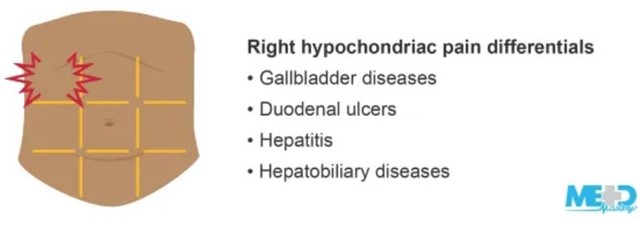A nurse is reinforcing teaching about signs preceding the onset of labor with a client who is at 39 weeks of gestation. Which of the following statements should the nurse include?
"You will experience urinary retention."
"You will have a decrease in vaginal discharge."
"You will experience a surge of energy."
"You will have a weight gain of 0.5 to 1.5 kilograms."
The Correct Answer is C
Choice A reason: "You will experience urinary retention." is incorrect, as this statement does not describe a sign preceding the onset of labor. Urinary retention can occur during labor due to pressure from the fetal head or epidural anesthesia, but it is not a sign that labor is imminent. The nurse should encourage the client to void frequently and monitor their bladder status.
Choice B reason: "You will have a decrease in vaginal discharge." is incorrect, as this statement does not describe a sign preceding the onset of labor. Vaginal discharge can increase before labor due to cervical ripening and dilation, which can cause bloody show or mucus plug loss. The nurse should educate the client about normal and abnormal vaginal discharge and when to report it.
Choice C reason: "You will experience a surge of energy." is correct, as this statement describes a sign preceding the onset of labor. A surge of energy, also known as nesting instinct, can occur before labor due to hormonal changes or psychological factors. The nurse should advise the client to conserve their energy and rest as much as possible before labor.
Choice D reason: "You will have a weight gain of 0.5 to 1.5 kilograms." is incorrect, as this statement does not describe a sign preceding the onset of labor. Weight gain can occur during pregnancy due to fetal growth, fluid retention, or increased caloric intake, but it is not a sign that labor is imminent. The nurse should monitor the client's weight and fluid balance and report any sudden or excessive weight gain that may indicate preeclampsia or other complications.
Nursing Test Bank
Naxlex Comprehensive Predictor Exams
Related Questions
Correct Answer is D
Explanation
Choice D reason: A client who has preeclampsia and reports epigastric pain and unresolved headache should be reported to the RN immediately, as these are signs of severe preeclampsia and impending eclampsia, which can lead to seizures, coma, and death. The client may need anticonvulsant medication, magnesium sulfate infusion, and delivery of the fetus.
Choice A reason: A client who is at 32 weeks of gestation and is experiencing irregular, frequent contractions is tearful may have preterm labor, which should be monitored and treated accordingly. However, this is not as urgent as choice D, as the contractions may subside with hydration, rest, or tocolytic medication.
Choice B reason: A client who has preeclampsia has 2+ patellar reflexes and 2+ proteinuria may have mild preeclampsia, which should be managed with antihypertensive medication, bed rest, and fetal monitoring. However, this is not as urgent as choice D, as the reflexes and proteinuria are not indicative of severe preeclampsia or eclampsia.
Choice C reason: A client who is at 28 weeks of gestation and receiving terbutaline reports fine tremors may have a common side effect of terbutaline, which is a beta-adrenergic agonist that relaxes uterine smooth muscle and inhibits contractions. However, this is not as urgent as choice D, as the tremors are usually transient and benign. The nurse should monitor the client's vital signs, blood glucose, and fetal heart rate.

Correct Answer is D
Explanation
Choice A reason: Swelling in both breasts is incorrect, as this finding does not indicate mastitis. Swelling in both breasts can occur due to engorgement, which is a normal and expected phenomenon in the first few days after birth or when milk production increases. Engorgement can cause breast fullness, tenderness, and warmth, but it does not cause infection or inflammation.
Choice B reason: Cracked and bleeding nipples is incorrect, as this finding does not indicate mastitis. Cracked and bleeding nipples can occur due to poor latch, improper positioning, or excessive suction of the baby. Cracked and bleeding nipples can cause pain, discomfort, and risk of infection, but they do not cause mastitis by themselves.
Choice C reason: Increase in breast milk is incorrect, as this finding does not indicate mastitis. Increase in breast milk can occur due to hormonal changes, frequent breastfeeding, or stimulation of the breasts. Increase in breast milk can cause engorgement, but it does not cause infection or inflammation.
Choice D reason: Red and painful area in one breast is correct, as this finding indicates mastitis. Mastitis is an infection and inflammation of the breast tissue that usually affects one breast at a time. Mastitis can cause redness, pain, swelling, warmth, and fever in the affected breast. Mastitis can occur due to blocked milk ducts, bacterial invasion, or poor hygiene. The nurse should advise the client to continue breastfeeding or pumping, apply warm compresses, massage the breast gently, and take antibiotics as prescribed.

Whether you are a student looking to ace your exams or a practicing nurse seeking to enhance your expertise , our nursing education contents will empower you with the confidence and competence to make a difference in the lives of patients and become a respected leader in the healthcare field.
Visit Naxlex, invest in your future and unlock endless possibilities with our unparalleled nursing education contents today
Report Wrong Answer on the Current Question
Do you disagree with the answer? If yes, what is your expected answer? Explain.
Kindly be descriptive with the issue you are facing.
